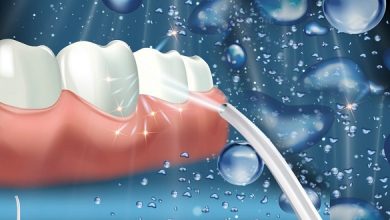Health Risks of Talc: Side Effects and Potential Damages

Talc, a soft mineral widely used in various personal care and cosmetic products, has long been celebrated for its smooth texture and absorbent qualities. However, some scientific studies and mounting concerns have highlighted the potential health risks associated with talc usage.
Talcum powder, commonly found in baby powder, body powders, and makeup products, has come under scrutiny due to its link to respiratory issues, ovarian cancer, and other health effects. The controversy surrounding talc has prompted numerous investigations, lawsuits, and regulatory actions.
As you delve deeper into the subject, you will examine the scientific evidence, explore the allegations, and provide an overview of the ongoing debate surrounding the safety of talc-based products. It is crucial to understand the potential health risks associated with talc to make informed decisions and protect well-being.
Exploring Talc-Related Side Effects
Scientific research has extensively investigated the potential side effects of talc, raising concerns about its safety and impact on human health. One significant area of focus has been the respiratory system. Inhalation of talc particles has been linked to respiratory issues, particularly in occupational settings where prolonged exposure is common.
Studies have found that workers exposed to talc dust, such as miners and factory workers, may experience respiratory symptoms such as coughing, wheezing, and difficulty breathing. Along with the increased risk of respiratory issues, TorHoerman Law states that talc is also associated with an increased risk of causing ovarian cancer, mesothelioma, pneumonia, and talcosis.
Several studies have suggested a potential connection between using talcum powder in the genital area and an increased risk of ovarian cancer in women. The mechanism behind this association is still being investigated, but it is believed that talc particles, when used in intimate hygiene practices, may cause inflammation and cellular changes.
Scientific Research and Studies on Talc Side Effects
These investigations have played a crucial role in unraveling the impact of talc on human health and informing public discourse on its safety.
Numerous studies have examined the respiratory effects of talc, particularly in occupational settings. These studies consistently suggest that prolonged exposure to talc particles can lead to respiratory symptoms and disorders. Workers in talc mining and manufacturing industries are particularly vulnerable, with reports of respiratory conditions such as coughing, wheezing, and difficulty breathing.
Moreover, the link between talc use and ovarian cancer has been extensively investigated. Scientific research has generated evidence suggesting a potential correlation between applying talcum powder in the genital area and an elevated likelihood of ovarian cancer in women.
These studies have examined the presence of talc particles in ovarian tissues and identified cellular changes that may be related to the development of cancer.
A notable study by Dr. Daniel W. Cramer published on DrugWatch revealed that women who regularly used talcum powder faced an alarming increase in their chances of developing ovarian cancer. The study found that these women had nearly double the risk of ovarian cancer compared to those who did not use talcum powder.
The risk became even more pronounced for women who not only applied talcum powder to their genitals but also used sanitary pads consistently – they faced a risk of over three times that of nonusers.
Legal Implications and Lawsuits Related to Talc Side Effects
The emerging evidence linking talc to various health risks, including respiratory issues and ovarian cancer, has led to significant legal implications. It surged in lawsuits against talc manufacturers. These legal actions highlight the concerns and seek accountability for the potential damages associated with talc-based products.
Thousands of lawsuits have been filed by individuals who claim that their long-term use of talcum powder resulted in adverse health effects. Many of these lawsuits allege that manufacturers failed to adequately warn consumers about the potential risks of talc, especially regarding its potential link to ovarian cancer.
According to the Legal Scoop, a significant legal victory occurred in 2019 when a California jury granted a substantial sum of $29.4 million to a woman with mesothelioma. The woman claimed that the rare cancer was a result of asbestos present in Johnson & Johnson’s talc-based products. This landmark verdict garnered widespread attention and set a precedent for subsequent lawsuits.
The legal implications and lawsuits surrounding talc side effects emphasize the need for transparency, accountability, and continued scientific research. As litigation proceeds, it will likely contribute to a better understanding of the potential risks associated with talc and may prompt further investigations into the safety of these products.
Compensation for Talc-Related Damages
The legal battles and lawsuits surrounding talc-based products have resulted in significant verdicts and settlements, providing some relief and justice for affected individuals.
News by Mesothelioma.com highlights the ongoing legal battles and compensation awarded in talc-related lawsuits. In a notable case, a jury awarded a substantial sum of $120 million in damages to a plaintiff, Donna Olson, who claimed that the use of talcum powder had caused mesothelioma. The verdict, announced in 2021, underscored the potential risks associated with talc.
These verdicts and settlements acknowledge the harm suffered by individuals and their families due to talc-related damages. They also catalyze raising awareness about the potential risks of talc-based products and urging manufacturers to prioritize consumer safety.
Protecting Your Rights
As the awareness of talc-related health risks continues to grow, individuals need to understand their rights and take steps to protect themselves. If you believe that your health has been adversely affected by talc-based products, here are some key considerations to safeguard your rights:
- Educate Yourself: Stay informed about the latest scientific research, studies, and regulatory actions regarding talc side effects.
- Consult a Medical Professional: If you are experiencing any health issues that you suspect may be related to talc exposure, seek medical advice promptly. A healthcare professional has the expertise to assess your symptoms, perform essential tests, and offer an accurate diagnosis.
- Preserve Evidence: Keep any receipts, product packaging, or documentation related to your talc-based product usage. This evidence can help establish a timeline for your exposure and strengthen your case if you choose to pursue legal recourse.
- Seek Legal Counsel: An experienced attorney specializing in personal injury or product liability cases can evaluate the merits of your case and guide you through the legal process.
Remember, protecting your rights is crucial when it comes to talc-related health risks. By taking proactive steps and seeking appropriate guidance, you can navigate the legal landscape and ensure your voice is heard in pursuing justice. Feel free to visit to learn more about – pearlvine login
Taking Necessary Precautions is Crucial
The health risks associated with talc have sparked significant concerns and raised important questions about consumer safety. Scientific research has shed light on the potential side effects, including respiratory issues and a controversial link to ovarian cancer. The legal landscape has witnessed numerous lawsuits, leading to substantial verdicts and settlements.
Continued research, regulatory actions, and public awareness are essential to ensure the safety of talc-based products and safeguard the well-being of individuals. Ultimately, informed decision-making and taking necessary precautions are crucial in navigating the potential health risks associated with talc.





